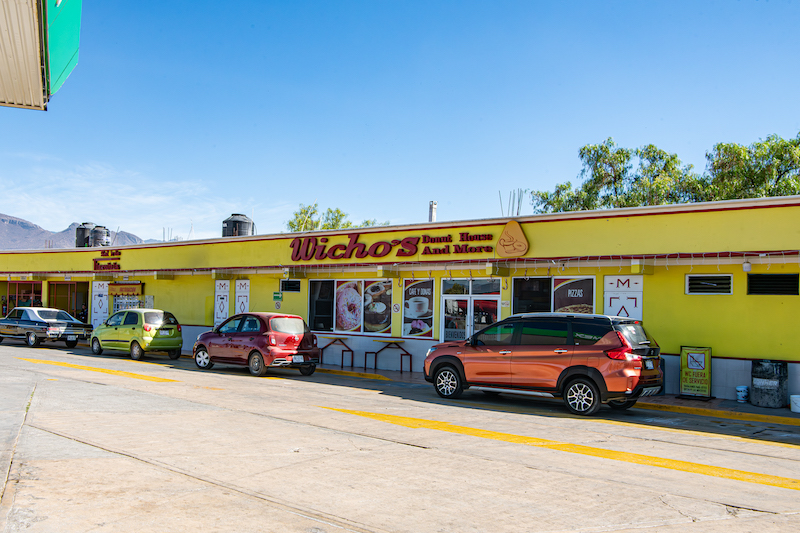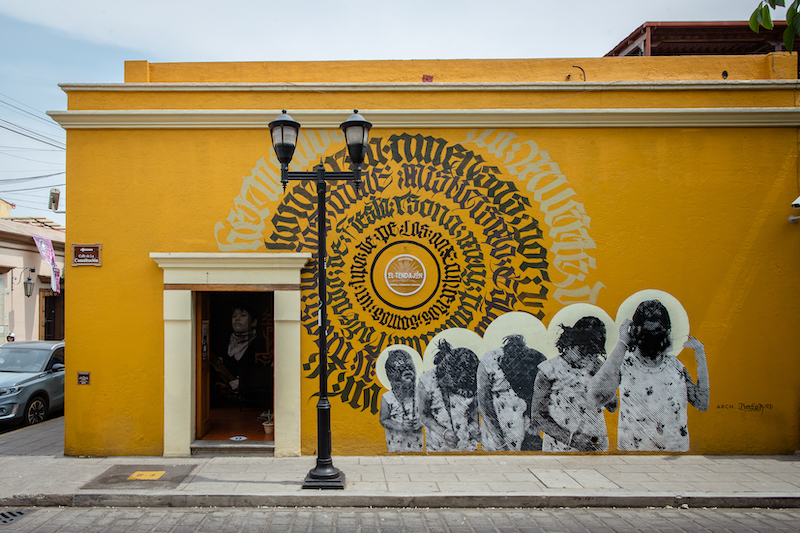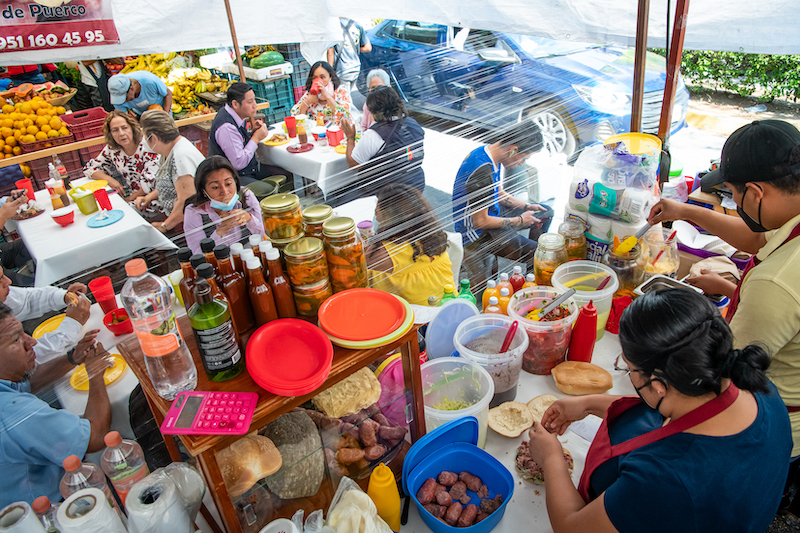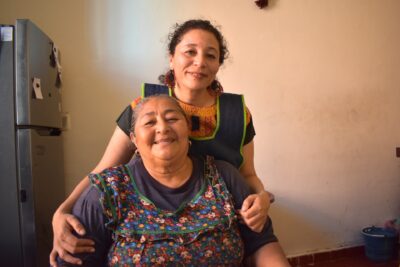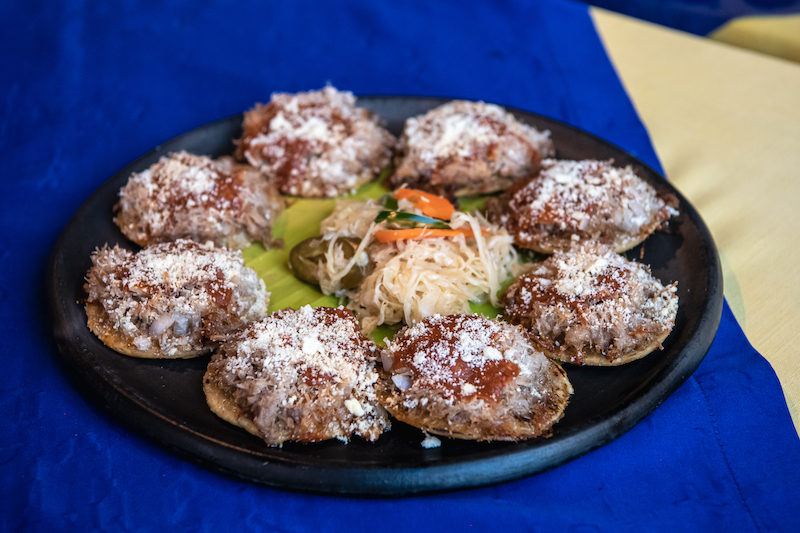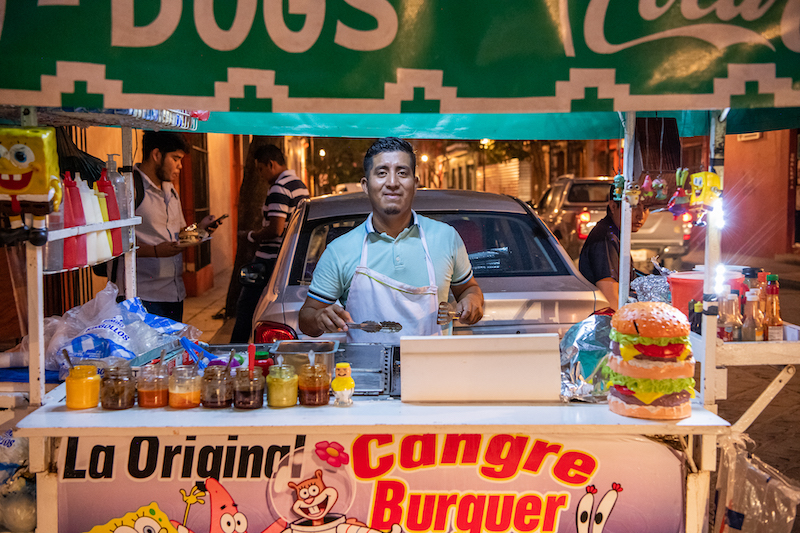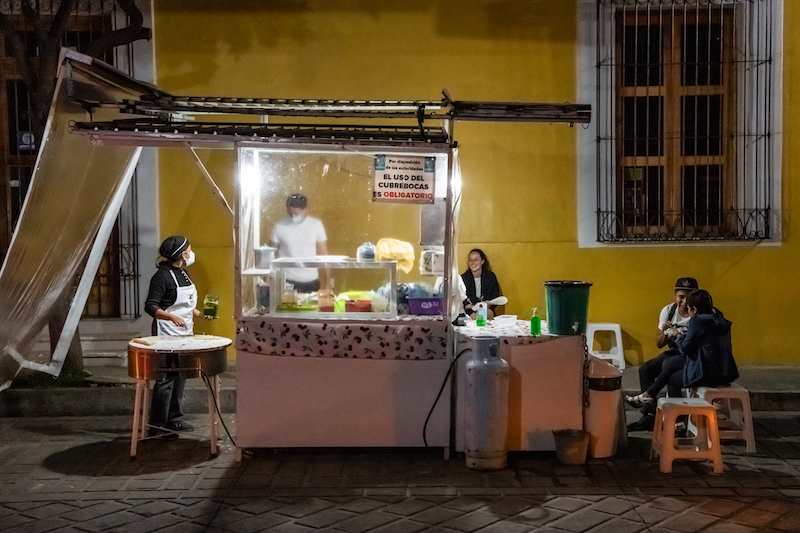We can't find the internet
Attempting to reconnect
Something went wrong!
Hang in there while we get back on track
Search results for "María Ítaka"
Oaxaca
Wicho’s Donut House: Reverse Culinary Migration
As he drove us to Tlacolula, some 19 miles east of Oaxaca City, in his burgundy-and-white taxi, salsa music in the background and a tiny bronze cross hanging from his rearview mirror, our driver Félix was philosophizing about migration. Like many other Oaxacan men, he had, at one point, crossed the border from Mexico to California in search of a better life. And like many fellow countrymen, he had come back home because he refused to live a life of persecution and uncertainty due to his legal status as an undocumented immigrant. His life back in Mexico was good; hard, yes, but joyful. “I can eat fresh fruits, dance with my kids, watch them grow. If this is not quality of life, I don’t know what it is,” he reflects. The music stops and so does Félix’s taxi. In the middle of the Tlacolula highway we’ve arrived at one of the area’s largest gas stations, and our destination.
Read moreOaxaca
El Tendajón Agavería: Something For Everyone
In Oaxaca, when friends come together to eat after a long night out, sitting down for brunch becomes a challenge – everyone has different cravings and dietary needs. In the heart of the city center, there is a place with something for everyone: Tendajón Agavería The all-day eatery is a true standout among the numerous restaurants that serve classic Oaxacan food, offering a variety of dishes that oscillate between traditional and innovative flavors. From the Croque Madame with smoked quesillo to a fresh poleo mint couscous with shrimp cooked in chintextle (chili paste), the menu has a strong Oaxacan overtone interpreted in very unexpected ways.
Read moreOaxaca
Salchicha Ejuteca: The Real Oaxacan Sausage
The history of Oaxacan food is deeply linked to the concept of adaptation. Our culinary identity has many chapters: the Mesoamerican native period, the colonial reign of Nueva España and the Mexico of the 20th century, which received another wave of immigrants who brought their gastronomic traditions and let them combine with the native and more tropical ingredients of these altitudes. That is the story of the salchicha ejuteca, a European style beef sausage that unexpectedly became one of the most desired foods on the Oaxacan snack table. While traditional corn-based products are a signature of Oaxacan cuisine, the salchicha ejuteca is an underestimated traditional element in the state’s food landscape. “Nobody knows for sure where the salchicha comes from.
Read moreOaxaca
Best Bites 2024: Oaxaca
Throughout this year, food has been a shelter and a source of comfort and healing. From tacos that put us at ease with their tender meats and flavorful salsas, to drinks that cooled us down and helped us sharpen our weary minds, the following are the bites that, for us, were some of the best in town in 2024. - María Ítaka A little space that feels familiar despite its very recent opening, La Frijolería specializes in all things beans, which are one of the ultimate comfort foods in our cuisine. Ironically, before La Frijolería opened its doors, it was hard to find a restaurant in town where beans were served as anything other than a side dish. But now our cravings can rest assured that they will be fulfilled.
Read moreOaxaca
Garnachas La Güera: Food from Tropical Oaxaca
At the bottom of a quiet street in Colonia Reforma, a neighborhood located in the northern-central area of Oaxaca City which hides many of the city’s best-kept food secrets, we find Garnachas La Güera. While the area is characterized by its quiet, residential streets, this restaurant is a small paradise where joy, music and good food transport you to the tropics. Garnachas La Güera specializes in food from Juchitán, a village in the Isthmus of Tehuantepec, close to Oaxaca’s southeastern coast and the border with the neighboring state of Chiapas. If Oaxaca is a state, Juchitán is like its own country within it.
Read moreOaxaca
La Original Cangreburger: Fast Food Artistry
It is 6:30 pm – the workday of most of the taco, quesadilla and memela vendors in the city is over, but “The Artist’s” shift has just begun. Every day, as the dusk light bathes the streets, 34-year-old Caleb Santiago sets up his food cart right below the centuries-old clock that overlooks the corner of 5 de Mayo and Murguía. By 7:00 pm, he is ready for another night of juicy hamburgers and hot dogs. Among all the late-night hamburger stalls sprawled across the city, Caleb’s is something else. Initially known as just “Cangreburgers,” this little SpongeBob Squarepants-inspired cart has been feeding Oaxacans for the last 16 years.
Read moreOaxaca
Empanadas del Carmen Alto: Oaxacan Fundamentals
Oaxaca’s street food scene has surprises for us every day of the week. From breakfast to lunch, we can find plenty of stalls with a plethora of options: eggs, tamales, tortas, tacos, hot drinks, juices and more. However, when sunset bathes the streets of the historic center, most of these stalls are disassembled into heaps of tarps, letting esquites, burger and hot dog stands take over the night shift. Fortunately, this is not the case for Empanadas del Carmen Alto, a classic among locals for serving up daytime dishes until midnight. The menu at Empanadas del Carmen Alto is succinct: memelas (thick corn tortillas topped with various ingredients), the famous empanadas de amarillo (calzone-like corn tortillas filled with chicken and mole amarillo) and squash blossom or mushroom quesadillas.
Read more